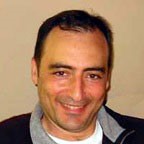RADLAB Seminar
Remote sensing at JPL and Some Satellite Convoys that we are planning for the Near Future
Add to Google Calendar

Remote sensing, particularly with microwave instruments (radiometers and radars) have been a increasingly large part of the research and development work at NASA's Jet Propulsion Laboratory (a division of the California Institute of Technology) in the "recent past" , i.e. the last twenty-or-so years. After a first part devoted to a review of this recent past history, including missions and projects dedicated to the remote sensing of Earth's surface, ocean or atmosphere, as well as planetary bodies such as Europa and Titan, the second part will be about the near-term future and, more specifically, a couple of "constellations of convoys" of small satellites designed to look inside the dynamics and thermodynamics of clouds and severe weather.
Dr. Ziad Haddad is the supervisor of the Radar Science group (334H) in the Radar Science & Engineering Section at the Jet Propulsion Laboratory (http://radar.jpl.nasa.gov/science). His group has played a major role in developing observation strategies for different Earth-science and planetary remote-sensing applications. Though his background is in mathematics (MIT Ph.D.), his main interests over the last few years center on the challenge of reconciling remote-sensing observations with the dynamical models that are used to analyze and to forecast.
He will return to Ann Arbor on November 3 and 4, at which time JPL University Recruiting team will be interviewing interested candidates for employment opportunities at JPL.
 MENU
MENU 
